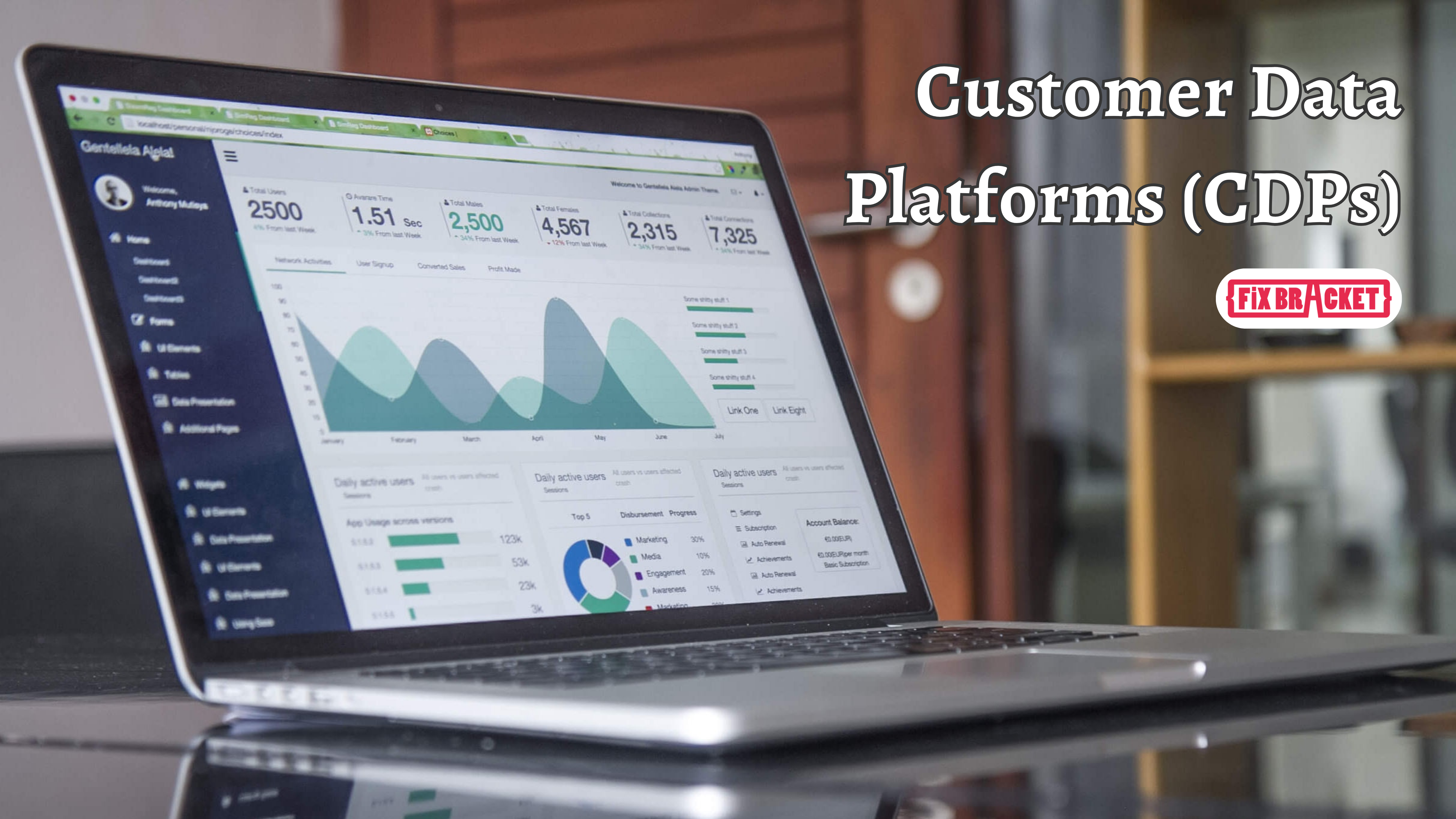Unlock Your Full Marketing Potential with a Customer Data Platform.

Understanding your clients like never before is necessary to maximize your marketing potential. Imagine having a thorough understanding of each customer’s preferences, actions, and requirements at every touchpoint. This is what customer data platforms are.
The customer data platforms (CDPs) method is helpful in this situation. In this post, we’ll examine how CDPs may transform your marketing initiatives, giving you the ability to provide individualized experiences, increase consumer involvement, and provide outstanding outcomes.
Let’s explore CDP techniques and maximize the potential of your marketing initiatives. But first, let’s look at what customer data platforms are in the first place.
Customer Data Platforms (CDP): A Brief

What Are Customer Development Platforms (CDPs)?
Imagine you’re running a small online store that sells trendy clothes. You have a website, an email list, and social media accounts. Now, think about all the information you gather from your customers:
- Website visits: Who’s coming to your site?
- Email sign-ups: Who’s joining your newsletter?
- Social media followers: Who’s following you on Instagram, Facebook, etc.?
- Purchases: What are customers buying?
A Customer Data Platform (CDP) is like a super-smart organizer for all this data. It takes all the info from different sources and puts it in one place, like a neat digital filing cabinet. Here’s how it works:
Let’s say a customer named Sarah visits your website, signs up for your newsletter, and buys a pair of jeans.
1. Website Visit: The CDP records Sarah’s visit and tracks what pages she looked at.
2. Email Sign-Up: It adds her email to her profile.
3. Social Media: If Sarah follows you on social media, that’s added too.
4. Purchase: When Sarah buys the jeans, the CDP notes the product, price, and date.
Now, you have a complete picture of Sarah as a customer in one place. So, when you want to send her a personalized email about a new clothing line, you can do it easily because the CDP knows her interests and shopping habits.
Key Points To Remember About CDPs
- Data Centralization: CDPs collect and store customer data from various sources.
- Single Customer View: They create a unified profile for each customer.
- Segmentation: You can group customers based on their behavior, like loyal shoppers or new visitors.
- Personalization: CDPs help tailor marketing messages and offers to specific customers.
- Analytics: They provide insights to improve marketing strategies.
- Privacy Compliance: CDPs often have built-in tools to ensure data protection and compliance with regulations like GDPR.
In short, a Customer Data Platform is your secret weapon to better understand your customers and deliver personalized experiences, making them more likely to keep coming back to your online store.
The 14 CDP Strategies & Techniques To Keep In Mind
In the previous sections of this blog, we’ve delved into the world of Customer Data Platforms (CDPs), understanding what they are and their vital role in modern business.
But here’s the exciting part: We’re about to dive even deeper! Get ready to explore the very best CDP strategies and techniques that entrepreneurs and marketers can put into action to supercharge their businesses.
Now, you might wonder, “How did we come up with these strategies?”
Well, it wasn’t just guesswork. A lot of research and industry insights have gone into identifying and crafting these 14 CDP strategies. These approaches have proven themselves effective across various businesses, industries, and customer landscapes.
So, stick around as we break down these strategies, providing you with actionable insights to harness the power of CDPs and achieve customer-centric success.

Top 14 CDP Strategies
1. Customer-Centric Messaging: Shift your business focus towards customers by creating personalized marketing messages and products tailored to their preferences and needs throughout their journey with your company. Instead of generic emails, use your CDP to send personalized product recommendations. For instance, if a customer often buys workout gear, send them an email with new fitness product arrivals tailored just for them.
2. Data Centralization: Use a CDP to gather data from various sources like CRM systems, website analytics, and social media. Integrate this data to create a comprehensive customer profile, including demographics, behaviors, and preferences. Imagine gathering data from your online store, social media, and in-store purchases. Your CDP combines this data into a single view, allowing you to understand each customer’s online and offline interactions.
3. Segmentation Strategy: Leverage the centralized data to segment your customer base. Develop specific marketing approaches for different customer groups based on their shared traits or behaviors. Let’s say your CDP shows that some customers often buy outdoor gear while others prefer indoor equipment. You can create different marketing campaigns targeting these two segments, maximizing their relevance.
4. Personalized Experiences: Utilize CDP insights to provide individualized customer experiences. For instance, recommend products based on past purchases or browsing history, and tailor email campaigns to align with customers’ interests. If your CDP knows a customer loves hiking, when they visit your website, it can show hiking gear recommendations front and center, creating a more tailored shopping experience.
5. Real-time Engagement: Benefit from real-time data processing capabilities to stay updated on customer actions. Respond promptly to customer activities, such as purchases or preference changes, with timely and relevant notifications. Imagine a customer abandons their shopping cart. With real-time data, your CDP can automatically send them a reminder email within minutes, encouraging them to complete their purchase.
6. Cross-Channel Branding: Ensure consistent messaging and experiences across multiple marketing channels. Whether a customer receives an email or visits your website, they should encounter a unified brand message and personalized content. Whether customers see your ad on Facebook or visit your website, they should recognize the same branding elements and messaging, creating a cohesive brand experience.
7. Predictive Analytics: Employ predictive analytics within your CDP to forecast customer preferences and future behaviors. Use these insights to fine-tune product offerings, marketing strategies, and customer support. Based on past behavior, your CDP might predict that a customer is likely to buy running shoes soon. You can proactively send them a special offer on running gear.
8. Customer Journey Mapping: Map out the customer journey by tracking interactions across various touchpoints. Identify critical touchpoints, potential obstacles, and conversion opportunities to enhance the overall customer experience. By analyzing the customer journey, you discover that many users drop off during the checkout process. You then focus on optimizing this step to reduce friction and increase conversions.
9. Retention Strategies: Leverage CDP data to identify at-risk customers. Implement targeted retention initiatives, such as customized offers or re-engagement campaigns, to reduce churn rates and boost loyalty. If your CDP flags a loyal customer who hasn’t purchased in a while, you can send them a “We Miss You” email with a special discount code to re-engage them.
10. Data Security and Compliance: Prioritize data security and compliance with privacy regulations (e.g., GDPR and CCPA). Implement robust data governance processes within your CDP to safeguard customer information and uphold privacy rights. Your CDP ensures that customer data is securely stored and used in compliance with privacy regulations. This builds trust with customers, knowing their information is protected.
11. ROI Tracking: Monitor customer interactions and campaign performance through your CDP. Use this data to calculate the ROI of various marketing efforts, enabling better resource allocation and informed decision-making. You use your CDP to measure the ROI of two different ad campaigns. By comparing the results, you can allocate your marketing budget more effectively towards the campaign that delivers better returns.
12. Cost-Efficiency Tactics: Utilize the CDP to execute cost-effective, customer-specific campaigns. Streamline your marketing efforts to reduce expenses while positively impacting ROI. By targeting specific customer segments with tailored promotions, you reduce marketing spend while increasing the likelihood of conversions, ultimately improving your ROI.
13. Efficient Data Handling: Leverage AI-driven data processing within your CDP to swiftly handle large volumes of customer data from multiple sources. Ensure that both structured and unstructured data are collected, sorted, and utilized effectively. Your CDP efficiently processes data from website clicks, mobile app interactions, and email engagement. This ensures you have the most up-to-date information to make informed marketing decisions.
14. Seamless CRM Integration: Seamlessly integrate your CDP with CRM systems to provide sales and customer support teams with a holistic view of each customer’s activities and history. This enables more personalized interactions and better customer management. When your sales team accesses your CRM, they see a customer’s complete history, including online interactions. This helps them provide more personalized service and close deals more effectively.
By implementing these CDP strategies, entrepreneurs can enhance their customer-focused approach, optimize marketing efforts, and drive business growth.
So what’s the bottom line?

Customer Data Platforms (CDP)
While both CDPs and DMPs contribute to audience segmentation, their methods differ. Using CDPs, organizations may segment customers based on unique behaviors and interactions, enabling them to develop highly customized experiences for existing clients.
DMPs divide audiences into segments based on more extensive, anonymous data, allowing companies to target bigger groups of consumers with comparable characteristics and interests.
The wrap-up on customer data platforms
Unlocking your marketing potential demands a game-changing strategy in a world where client data reigns supreme. A CDP (Customer Data Platform) can help with that. Businesses may now significantly increase the effectiveness of their marketing campaigns thanks to CDPs, which centralize and harness the power of client data.
The ability to tailor customer experiences that enthrall customers and increase engagement is given to organizations by CDPs through data consolidation, segmentation, and real-time processing. Better decision-making and improved marketing efforts are made possible by the integration of AI-driven predictive analytics with customer journey mapping.
Don’t overlook CDP techniques’ unrealized potential. Unleash the power of data, embrace the future of marketing, and watch your company reach new heights of success!
People Also Read:
Why Customer Data Platforms Are Important To Create Unified Customer Profiles?
Account Based Marketing (ABM): The Ultimate 2023 Guide.




